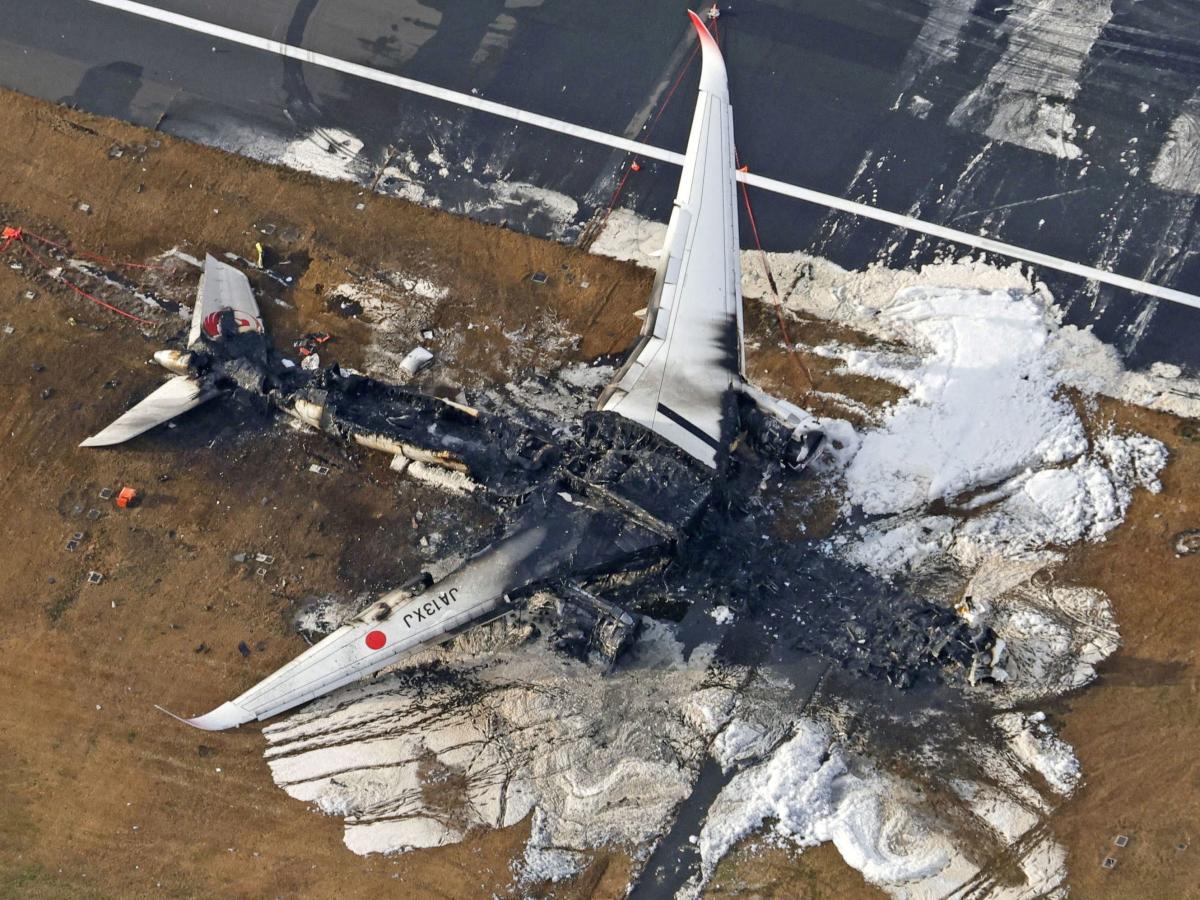We now have a better sense of what may have caused the Japan Airlines crash in Tokyo.
A Japanese coast-guard aircraft that the passenger jet hit while landing wasn’t cleared to take off.
Transcripts from just before the crash appear to contradict the coast-guard pilot’s claim.
A coast-guard aircraft that collided with a Japan Airlines passenger jet this week wasn’t cleared for takeoff, according to an air-traffic-control transcript detailing the moments before the crash.
The coast-guard plane was instructed to taxi to a point near the runway on Tuesday evening at Tokyo’s Haneda Airport, Bloomberg reported, citing the transcript.
But the captain of the plane said after the accident that he had “obtained permission to take off,” Japanese media reports said.
Someone on the coast-guard plane acknowledged the directive to taxi, Bloomberg reported.
“Taxi to holding point C5 JA722A No. 1, Thank you,” Bloomberg quoted from the transcript. It’s unclear whether the person speaking was the captain or his copilot.
Five of the six crewmembers of the coast-guard plane died; the captain was the only survivor and was badly injured after the crash, Reuters reported.
The Japan Airlines passenger jet that collided with the coast-guard plane had permission to land, the transcripts show.
All 379 passengers on board escaped before the aircraft burst into flames after landing — even though the intercom system was broken and more than half the emergency exits were unusable.
Experts said the passengers and crew survived because they listened to the flight crew and left their luggage behind.
Reuters reported that Japan’s Safety Transport Board was working with British and French government agencies to investigate the accident.
The Airbus was built in France, and its Rolls-Royce engines were built in the UK, Reuters reported.
“The transport ministry is submitting objective material and will fully cooperate with the … investigation to ensure we work together to take all possible safety measures to prevent a recurrence,” Japan’s transport minister, Tetsuo Saito, told reporters after the crash.
Correction: January 3, 2024 — A previous version of this story misspelled the name of the Tokyo airport. It’s Haneda Airport, not Hanata Airport. It also incorrectly stated where the Japan Airlines plane’s parts were manufactured. The plane was built in France, and its engines were built in the UK.
Read the original article on Business Insider
